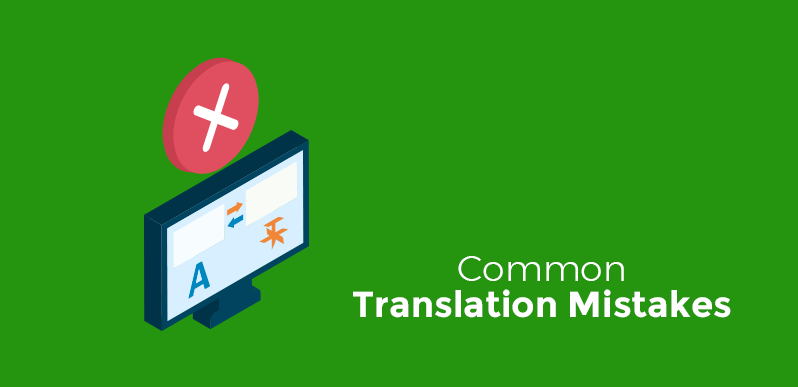Most common translation mistakes can trip up even seasoned professionals. Translation of any kind of document is a complex, technical job that demands skill, precision, and excellent command of written language in at least two languages.
This includes a solid understanding of syntax, terminology, idioms, and the culture of the region where the target language is used—whether it’s a transcripts translation or any other service.
Often, translators struggle either because they’re new to the craft or aren’t fully aware of project requirements. In this article, we review the 9 most common translation mistakes and how to avoid them.
1. Ineffective communication
If you communicate poorly with the client, misunderstandings happen on both sides: you may miss requirements and they may overlook constraints.
Keep a clear channel of communication and confirm queries early to deliver an accurate translation.
2. Translating word for word
The goal is to convey meaning, not to mirror each word. Literal translation often produces text that doesn’t make sense in the target language.
Each language has its own syntax and conventions (adjective placement, subject–verb agreement, grammatical gender, idioms). Handle idiomatic expressions carefully—verbatim renderings rarely match the original intent.
Read more: Translation Quality Assessment: Things You Need to Know.

3. Using incorrect words
Inexperienced translators may use terms in the wrong context. Some words, phrases, or legal Latin/Frenchisms have no natural equivalent; in such cases, keep the original term with an explanation if needed.
This is especially true in legal document translation where terms such as voir dire, ab initio, de facto, or habeas corpus are standard.
See also: Tips for Translating Legal Documents.
4. Exaggeration of word meanings
Overcomplicating language to sound diligent doesn’t help. Match client needs and context. Keep the language simple for guides/manuals; request editorial standards for literary or publishable work.
You may enjoy: Most Beautiful Untranslatable Words in the World.
5. Using incorrect tone and style
Every document type has a style. You can’t translate legal documents, medical transcripts, and film scripts the same way.
Use the right tone and respect punctuation norms. Be mindful of date/time formats (24-hour vs. am/pm), DD/MM/YYYY vs. MM/DD/YYYY, and currency conventions.
6. Working in a language you’re not proficient in
Genuine proficiency in both source and target languages is essential. Accepting projects outside your proficiency increases the risk of translation mistakes and harms reputation.
7. Accepting more work than you can handle
Many professionals average around 2,000 words per day depending on research. Overcommitting jeopardizes quality and deadlines—and your well-being.
It’s better to under-promise and over-deliver. See a real-life perspective in our Translateday FAQ.
8. Accepting documents outside your specialization
Specialization matters. As translators, we should take on projects in topics we know deeply. Experience leads to expertise and outstanding results.
Some focus on literary translation; others on technical, legal, medical, or media. Each niche has its tone, style, and jargon.
9. Not keeping yourself up to date
Language evolves constantly; new terms and idioms emerge. Continuous learning helps you avoid surprises and keep quality high.
Knowing the pitfalls helps you avoid them. Keep this list of most common translation mistakes in mind to protect quality and consistency.
Most Common Translation Mistakes — quick checklist
- Clarify scope, audience, and deliverables with the client.
- Translate meaning, not words; adapt idioms and style.
- Validate terminology and context; keep necessary Latinisms.
- Match tone, register, and formatting conventions.
- Accept work within language proficiency and specialization.
- Manage workload; protect quality and deadlines.
- Keep learning; update glossaries and references.
TranslateDay provides Certified Translation Services for legal, technical, medical, and personal documents. Our expert team delivers accurate, on-time translations you can rely on. Get a free quote today.
FAQ
What is the most common translation mistake?
Literal, word-for-word rendering that ignores meaning, tone, and idioms. Always prioritize intent and readability in the target language.
How do I avoid terminology errors?
Use approved glossaries, consult reliable references, and when no natural equivalent exists, keep the source term with a brief explanation if needed.





